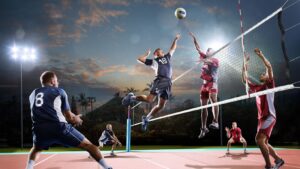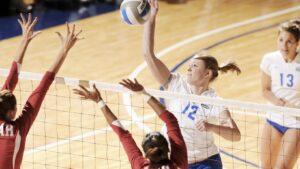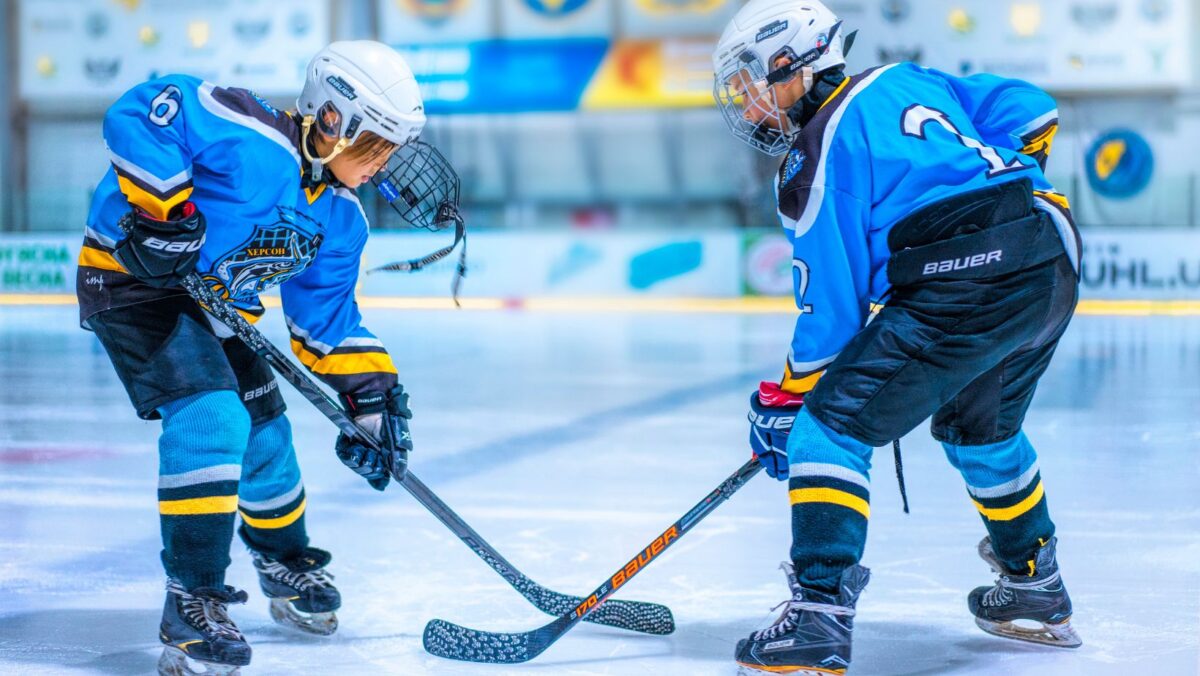 The defensive strategy known as pola pertahanan satu jaga satu di daerah pertahanan dinamakan is a fascinating concept that has gained significant attention in recent years. This strategy, which translates to “one guard, one area defense pattern,” is a highly effective method of protecting an area or territory. By assigning a single guard to each specific area, this strategy ensures maximum coverage and minimizes vulnerabilities.
The defensive strategy known as pola pertahanan satu jaga satu di daerah pertahanan dinamakan is a fascinating concept that has gained significant attention in recent years. This strategy, which translates to “one guard, one area defense pattern,” is a highly effective method of protecting an area or territory. By assigning a single guard to each specific area, this strategy ensures maximum coverage and minimizes vulnerabilities.
In this article, we will delve deeper into the intricacies of this defensive pattern and explore its benefits and applications. From military operations to sports strategies, the concept of pola pertahanan satu jaga satu di daerah pertahanan dinamakan has proven to be a game-changer. We will also examine real-world examples of its successful implementation and discuss the key factors that contribute to its effectiveness.
Whether you are a military enthusiast, a sports coach, or simply curious about innovative defensive tactics, this article will provide valuable insights into the concept of pola pertahanan satu jaga satu di daerah pertahanan dinamakan. Join us as we unravel the secrets behind this powerful defensive strategy and discover how it can revolutionize the way we approach defense.
 Pola Pertahanan Satu Jaga Satu Di Daerah Pertahanan Dinamakan
Pola Pertahanan Satu Jaga Satu Di Daerah Pertahanan Dinamakan
The pola pertahanan satu jaga satu di daerah pertahanan dinamakan is a defensive strategy that focuses on assigning one guard to each specific area of defense in order to ensure maximum coverage and minimize vulnerabilities. This strategic approach has been widely utilized in various contexts, including military operations and sports strategies.
In military operations, the pola pertahanan satu jaga satu di daerah pertahanan dinamakan strategy provides an effective method of safeguarding critical areas and strategic positions. Assigning a single guard to each specific area allows for concentrated defense and quick response to any potential threats. This approach maximizes the efficiency of the defense system and decreases the likelihood of breaches or infiltration.
 The same concept applies to sports strategies, where the pola pertahanan satu jaga satu di daerah pertahanan dinamakan method can be employed to enhance defensive capabilities. By assigning a dedicated player to guard a specific area, teams can effectively neutralize opponents’ offensive plays and prevent scoring opportunities. This strategy is particularly valuable in sports such as basketball, soccer, or hockey, where maintaining a strong defense is crucial for team success.
The same concept applies to sports strategies, where the pola pertahanan satu jaga satu di daerah pertahanan dinamakan method can be employed to enhance defensive capabilities. By assigning a dedicated player to guard a specific area, teams can effectively neutralize opponents’ offensive plays and prevent scoring opportunities. This strategy is particularly valuable in sports such as basketball, soccer, or hockey, where maintaining a strong defense is crucial for team success.
 Successful implementation of the pola pertahanan satu jaga satu di daerah pertahanan dinamakan strategy relies on several key factors. First and foremost, it requires clear communication and coordination among the guards to ensure seamless coverage across the entire defensive area. Additionally, each guard must possess strong situational awareness, quick decision-making abilities, and effective defensive techniques to effectively repel attacks.
Successful implementation of the pola pertahanan satu jaga satu di daerah pertahanan dinamakan strategy relies on several key factors. First and foremost, it requires clear communication and coordination among the guards to ensure seamless coverage across the entire defensive area. Additionally, each guard must possess strong situational awareness, quick decision-making abilities, and effective defensive techniques to effectively repel attacks.
The pola pertahanan satu jaga satu di daerah pertahanan dinamakan strategy is a powerful defensive approach that has proven to be effective in both military and sports contexts. By assigning a single guard to each specific area, this strategy ensures maximum coverage and minimizes vulnerabilities. Its successful implementation relies on clear communication, coordination, and the skills of each individual guard. Whether in the battlefield or on the sports field, this strategy has the potential to revolutionize defensive approaches and contribute to overall success.
Benefits of One-on-One Defense in Defensive Areas
 One-on-one defense, also known as pola pertahanan satu jaga satu di daerah pertahanan dinamakan offers numerous benefits in a variety of contexts. This defensive strategy assigns one guard to each specific area of defense, creating a focused and effective defensive structure. Whether applied in military operations or sports strategies, this approach enhances defensive capabilities and contributes to overall success.
One-on-one defense, also known as pola pertahanan satu jaga satu di daerah pertahanan dinamakan offers numerous benefits in a variety of contexts. This defensive strategy assigns one guard to each specific area of defense, creating a focused and effective defensive structure. Whether applied in military operations or sports strategies, this approach enhances defensive capabilities and contributes to overall success.
1. Enhanced Coverage
Implementing a one-on-one defense strategy ensures that each defensive area is closely monitored and guarded. By assigning a dedicated guard to a specific area, the likelihood of an opponent penetrating the defense is significantly reduced. This strategy effectively neutralizes opponents’ offensive plays and helps maintain control over critical areas and positions.
2. Flexibility and Adaptability
 One-on-one defense enables quick adjustments and adaptability in dynamic situations. As each guard is responsible for their designated area, they can swiftly react to threats, changing the defensive approach accordingly. This strategic flexibility allows for effective responses to opponent’s movements, making it difficult for them to exploit gaps in the defense.
One-on-one defense enables quick adjustments and adaptability in dynamic situations. As each guard is responsible for their designated area, they can swiftly react to threats, changing the defensive approach accordingly. This strategic flexibility allows for effective responses to opponent’s movements, making it difficult for them to exploit gaps in the defense.
3. Clear Communication and Coordination
Successful implementation of one-on-one defense relies on clear communication and coordination between guards. Each guard must maintain constant communication with their teammates to ensure seamless coordination and swift responses to potential threats. By actively communicating and sharing information, guards can effectively distribute defensive responsibilities and enhance the overall defensive performance.
4. Exploiting Individual Skills
 One-on-one defense allows guards to showcase their individual skills and expertise. By assigning a guard to a specific area, their skill set and strengths can be utilized to their full potential. This strategy maximizes the defensive capabilities of each guard, creating a formidable defensive line that is difficult for opponents to break through.
One-on-one defense allows guards to showcase their individual skills and expertise. By assigning a guard to a specific area, their skill set and strengths can be utilized to their full potential. This strategy maximizes the defensive capabilities of each guard, creating a formidable defensive line that is difficult for opponents to break through.
5. Psychological Advantage
By implementing a one-on-one defense strategy, teams create a psychological advantage over their opponents. The presence of a dedicated guard in each defensive area instills a sense of security, confidence, and control. This psychological impact can disrupt opponents’ offensive tactics, forcing them into making mistakes or taking unnecessary risks, ultimately leading to turnovers and defensive victories.
Effective Techniques for One-on-One Defense in Defensive Areas
Positioning and Communication
When employing the one-on-one defense strategy known as pola pertahanan satu jaga satu di daerah pertahanan dinamakan it’s crucial for defenders to focus on effective positioning and communication.
 Positioning: Defenders should strategically position themselves in their designated areas to provide optimal coverage and create a strong defensive presence. By occupying the right spaces on the court, defenders can limit the offensive player’s options and create obstacles for them to overcome. This positioning allows defenders to deny penetration, contest shots, and disrupt passing lanes, ultimately forcing turnovers and reducing the opponent’s scoring opportunities.
Positioning: Defenders should strategically position themselves in their designated areas to provide optimal coverage and create a strong defensive presence. By occupying the right spaces on the court, defenders can limit the offensive player’s options and create obstacles for them to overcome. This positioning allows defenders to deny penetration, contest shots, and disrupt passing lanes, ultimately forcing turnovers and reducing the opponent’s scoring opportunities.
Communication: Clear and effective communication among defenders is essential for successful one-on-one defense in defensive areas. It enables defenders to make timely switches, rotations, and adjustments, ensuring that every offensive threat is accounted for. By communicating with each other, defenders can anticipate offensive actions, coordinate their movements, and maintain a unified defensive front. Effective communication also fosters trust and confidence among defenders, enabling them to react quickly and decisively to any offensive challenges.
Anticipating and Reacting to Attacks
Another crucial aspect of the one-on-one defense strategy is the ability to anticipate and react to incoming attacks. While defenders are responsible for guarding specific areas, they must also be prepared to defend against different offensive tactics and individual offensive players.
 Anticipating Attacks: By studying opponents’ tendencies, defenders can develop a sense of anticipation, allowing them to recognize patterns and react proactively. They can predict offensive actions, such as cuts, screens, or drives, based on the opponent’s positioning and movement. This anticipation enables defenders to position themselves more effectively, disrupt offensive plays, and force the opponent into unfavorable situations. Reacting to Attacks: Quick reactions are essential when guarding opponents in one-on-one defense situations. Defenders must possess the agility, speed, and awareness to react promptly to offensive moves, such as dribble penetration, shot attempts, or passing opportunities. By maintaining active footwork, staying low in defensive stances, and using their hands to contest shots or disrupt passes, defenders can effectively neutralize offensive threats and force turnovers.
Anticipating Attacks: By studying opponents’ tendencies, defenders can develop a sense of anticipation, allowing them to recognize patterns and react proactively. They can predict offensive actions, such as cuts, screens, or drives, based on the opponent’s positioning and movement. This anticipation enables defenders to position themselves more effectively, disrupt offensive plays, and force the opponent into unfavorable situations. Reacting to Attacks: Quick reactions are essential when guarding opponents in one-on-one defense situations. Defenders must possess the agility, speed, and awareness to react promptly to offensive moves, such as dribble penetration, shot attempts, or passing opportunities. By maintaining active footwork, staying low in defensive stances, and using their hands to contest shots or disrupt passes, defenders can effectively neutralize offensive threats and force turnovers.
Implementing One-on-One Defense in Different Defensive Scenarios
One-on-One Defense in Soccer
One-on-one defense in soccer refers to the strategy of assigning one defender to mark and contain a specific opponent player. This defensive approach, known as pola pertahanan satu jaga satu di daerah pertahanan dinamakan in Indonesian, is widely used in soccer to limit the offensive options of the opponent and maintain control over defensive areas.
 To effectively implement one-on-one defense in soccer, positioning plays a crucial role. Defenders should aim to stay close to their assigned opponent, denying them space and time to receive or pass the ball. By staying goal-side and maintaining appropriate distance, defenders can actively prevent the opposition player from making effective forward runs or receiving long passes. Another important aspect of one-on-one defense in soccer is communication. Defenders need to communicate with their teammates consistently, providing updates on the movements and actions of the opponent they are marking. This enables the team to adjust their defensive positioning and respond quickly to potential threats.
To effectively implement one-on-one defense in soccer, positioning plays a crucial role. Defenders should aim to stay close to their assigned opponent, denying them space and time to receive or pass the ball. By staying goal-side and maintaining appropriate distance, defenders can actively prevent the opposition player from making effective forward runs or receiving long passes. Another important aspect of one-on-one defense in soccer is communication. Defenders need to communicate with their teammates consistently, providing updates on the movements and actions of the opponent they are marking. This enables the team to adjust their defensive positioning and respond quickly to potential threats.
One-on-One Defense in Basketball
In basketball, one-on-one defense refers to the strategy of guarding a specific opponent player individually. This defensive tactic, also known as pola pertahanan satu jaga satu di daerah pertahanan dinamakan is employed to maximize defensive coverage and disrupt the opponent’s offensive plays.
To execute effective one-on-one defense in basketball, defenders should focus on staying low and maintaining a wide stance. This defensive posture allows them to quickly react to the offensive moves of their assigned opponent, such as dribble penetration or shot attempts. By staying low, defenders can also exhibit lateral quickness and agility, making it more challenging for the opponent to navigate past them.
One-on-One Defense in Hockey
 Pola pertahanan satu jaga satu di daerah pertahanan dinamakan, or one-on-one defense, also plays a significant role in hockey. In this defensive strategy, each defender is assigned to mark a specific opponent player, denying them space and limiting their scoring opportunities.
Pola pertahanan satu jaga satu di daerah pertahanan dinamakan, or one-on-one defense, also plays a significant role in hockey. In this defensive strategy, each defender is assigned to mark a specific opponent player, denying them space and limiting their scoring opportunities.
Positioning is critical in one-on-one defense in hockey. Defenders must aim to stay between their assigned opponent and the goal, making it difficult for them to receive passes or take shots. By maintaining a strong defensive position, defenders can force the opponent to the outside and minimize their scoring chances. Furthermore, quick reaction and decision-making are vital in one-on-one defense in hockey. Defenders need to anticipate the opponent’s movements and quickly react to their offensive maneuvers. By doing so, defenders can intercept passes, block shots, and regain possession for their team.
Implementing the one-on-one defense strategy, whether in soccer, basketball, or hockey, requires careful positioning, effective communication, anticipation, and quick reaction. By employing these techniques, defenders can enhance their defensive capabilities, neutralize threats, and contribute to their team’s success.

